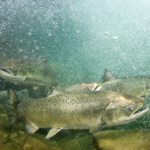– Loss of stability
Cases of loss of stability are observed in steel silos of various structures. The most significant causes of the local loss of stability are to die in the manufacture, transportation and construction of the walls of silos, as well as a decrease in the supporting effect of grain at its expiration and especially with an extra -central issue near the wall. The most common defects in metal silos: reducing the thickness of the sheet, loose squeezing of the folding joints, cracks in the folds due to insufficient plasticity of steel, the initial decay of the sheet between the folds and significant corrosion of the outer surface, especially in the zones above the folds. In addition, damage and defects in metal structures appear as a result of exposure to other power, mechanical, physical and chemical factors. One of the main reasons for a decrease in the durability of steel structures is the destruction of metal from corrosion. Building structures are characterized by atmospheric (electrochemical corrosion), which is caused by the effects of moisture on the surface Christmas tree of the metal.
The effects of corrosion on the structure can be of two types: a general lesion in an aggressive gases and local lesions by corrosion of individual nodes and parts of structures. Corrosion depending on the degree of aggressiveness of the medium proceeds in a large speed range – from Q, 05 to 1.6 mm per year. Corrosion rate depends on the conditions of the environment and the degree of air humidity. With an increase in the relative humidity of the medium and the temperature increase, the corrosion process is accelerated. At a temperature of 30 ° C to – 40 ° C, the corrosion of steel ceases.



